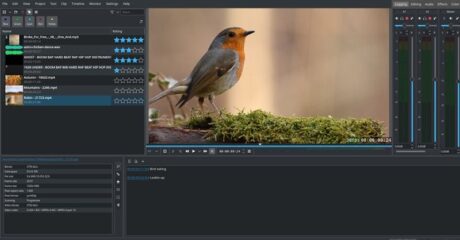

Phlebotomy or more commonly known as venipuncture, is one of the essential services in the healthcare industry. Conversely, it’s one of the most underappreciated professions as well. Most non-medical personnel looking to enter the healthcare industry overlook this skill based line of work. Considering these factors we put together this blog to answer the question how to become a phlebotomist? Along with that we’ve covered some tips which are essential for a career in phlebotomy.
Right off the bat phlebotomy is a highly technical procedure which takes months to master and apply. Knowledge of vein selection, the order of draw, alternative sites, storage and transportation requirements, safety precautions, are only a few factors that a phlebotomist must consider.
What does a Phlebotomist do
If you’re an adult reading this you’ve probably come across a phlebotomist or two by now. Phlebotomists are technicians employed in the medical sector who collect blood samples directly from patients veins using hypodermic needles.
Phlebotomy requires mastery of eye hand coordination which takes a significant amount of practice. Most importantly though, phlebotomists need to communicate with patients and donors about the procedures and tests. Given the critical factors involved in drawing blood, phlebotomists need sharp practice as well as steady nerves.
Why should YOU become a phlebotomist
There are a couple of reasons a career in phlebotomy is a promising line of work. Here we’ve gathered a few that are reasonable enough to consider Phlebotomy.
UK medical expansion
The medical sector in the UK is currently one of the fastest growing job markets in the world. This includes professions such as nurses, caregivers and phlebotomists alike. Based on conservative estimates experts believe the demand for phlebotomists is expected to grow by 25% within 2026. If you’re looking to find employment in the medical sector phlebotomy is definitely a good choice considering availability.
Helping People
Phlebotomy although very technical is still a people oriented job. If you have a genuine intention of helping people you’ll be doing it everyday as a phlebotomist. Many patients find needles unsettling. Consequently as a phlebotomist you can help people while making a living. You should become a phlebotomist if helping people is a natural tendency.
Career advancement
Phlebotomy skills are important in all sorts of settings in the medical industry. Which is precisely why general practitioners, lab assistants and nurses find it beneficial to learn phlebotomy. If you’re already working in the health care sector, learning phlebotomy can be a reliable step to advancing your career and earning prospects.
Lucrative salary
Phlebotomists usually work the basic 9 to 5 shifts at NHS hospitals with many exceptions. However some employers may require you to work on call in emergency situations while others employ based on rotating shifts. Depending on these arrangements the payment varies for phlebotomists.
The average annual salary in the UK is around £18000 according to UKTaxCalculator. PayScale puts the salary between £15000 and £21000. According to Indeed the average is marginally higher at £18800. Which is very lucrative considering working conditions and time required to complete training.
7 Essential Tips after you become a Phlebotomist
Like every medical procedure, there are certain indisputable rules phlebotomists need to follow. To perform venipunctures cleanly, safely, successfully while causing the least amount of discomfort these rules are crucial. Some of these guidelines are fundamental and considered the commandments of phlebotomy. After you become a phlebotomist you need to adhere to these rules throughout your career, without exception.
1. Protect yourself
As a phlebotomist, protecting yourself is the first step to becoming a professional. Today, drawing a sample of blood can potentially expose you to at least 20 communicable diseases. Most of them are life threatening, some of them cause incurable and fatal disease, but all of them may be preventable if health care workers use appropriate caution, technique and equipment.
An estimated 1 million health care workers sustain accidental needle sticks every year. As many as 3000 phlebotomists contract some form of hepatitis while 50-60 of them become seropositive for HIV. All of these outcomes result from accidental needle pricks which in most cases are self inflicted.
2. Confirm patient identity
Confirming patient identity is a crucial part of a phlebotomist’s job. Usually it means ensuring the sample is matched with the appropriate patient and assigned the correct tests. In case of sedated or semi-conscious patients instead of seeking an affirmation of identity, as a phlebotomist you need to request them to state their full name.
If an emergency room patient can’t be identified immediately, an assigned number is a temporary solution. When positive identification is not possible the patient’s nurse or other caregiver must identify the patient and their name needs to be documented as the person who verified the patient’s identity for you. No other methods are reliable.
3. 15 degree angle
Most textbooks agree that a 15-30 degree angle of insertion is optimal. A low angle of entry provides for a greater margin of error in judging the depth of penetration and reduces the chances of passing through the vein and injuring nerves, tendons and arteries. This doesn’t mean you start carrying around protractors to measure angles, but inserting the needle at as low an angle as possible is key.
In cases involving injury to patients during phlebotomy, a majority of the nerve injuries involve an excessive angle of insertion. Injuring a patient while puncturing due to a steep angle is not an ideal setting if legal disputes are filed.
4. Medial vein
Of the three veins in the antecubital area that are acceptable for venipuncture, the median cubital vein (in the middle) is considered ideal for four reasons:
1. It’s a comparably stationary vein;
2. Inflicts less pain to the patient;
3. Easier to find because it’s closer to the skin; and
4. It isn’t surrounded by nerves or arteries.
When surveying the antecubital area, check both arms for the medial vein before considering any of the alternatives. If it’s not prominent enough to instill confidence on either side, the second choice is the cephalic vein on the lateral or thumb side of the arm. The basilic vein (located on the medial or inside aspect of the antecubital area) is a last resort.
Underlying nerves and the brachial artery make punctures in this area highly risky. Most misguided punctures into this vein cause permanent nerve injuries and arterial nicks. You have to be able to draw blood from all of these sites as a phlebotomist.

4. Invert tubes after collection
A large number of samples rejected by laboratories are due to clots in lavender or blue-stoppered tubes. Quickly inverting after collection prevents a second puncture. If not possible immediately, invert the tubes as soon as possible after the puncture.
Drawing blood from a syringe requires extra consideration to prevent clotting.
Blood starts to clot from the moment it enters the barrel of the syringe. If the time it takes to fill the syringe and evacuate the specimen into the tubes exceeds 1 minute, significant clotting may take place. Not only will this make it difficult to evacuate the specimen through the needle and into the tubes, but if the clots are small enough to go undetected they can affect the accuracy of the results.
5. Labelling is a must
There is no excuse for not completely labeling a specimen. This means complete identification, not just temporary identifiers.
Patients have died as a result of mislabeled specimens. Although the concept of complete and accurate specimen identification has been repeated loudly and clearly for decades, delayed labeling practices are still found here and there. Immediate labelling reduces the risk of mishaps that could endanger patients.
6. Treat patients as if your own
In a hospital, the only peace most patients experience is that provided by health care professionals by their kind gestures, gentle technique and their smiles. Regardless of how you think your life affects your position as a healthcare professional, consider yourself assigned by a higher authority. Because of the comfort you can offer to the sick and injured in your own unique and compassionate way.
7. Know when to quit
Knowing when to quit is important. It’s unlikely that everyone will be able to draw blood from every patient. Even veteran phlebotomists can have difficulty from time to time. This is because veins placed in the antecubitals of the population are random. After two failed attempts, you should seriously consider bringing in someone else. That’s professionalism. It may also reassure your already agitated patient.
Ending Notes to Become a Phlebotomist
In a care-oriented profession, a day at work means coming in contact with distressed people. Being able to help people while earning is the true reward of being a phlebotomist. Phlebotomy skills are one thing the health care and research community will always need.
Phlebotomy is and will continue to be essential as more people are born and more tests are ordered. As the COVID-19 era has made it clear, health care professionals like phlebotomists are part of our first line of defence against unseen threats.
If you think you have strong nerves and tolerance to needles and blood, there is nothing that can stop you from being successful as a phlebotomist.
Check out our blog on to “Timetable for Study: Step-by-Step With Sample Table” to prepare yourself before starting off on getting your Phlebotomy certification
Sources:
2) Carlsen, W., & Holding, R. (1998, April 13). Epidemic rages caregivers: thousands die from diseases contracted through needle sticks. San Francisco Chronicle.
3) Pallatroni, L. (1998). Needlesticks: Who pays the price when costs are cut on safety? MLO, 30(7), 30-31, 34-36, 88.
4) Carlsen, W., & Holding, R. (1998, April 14). High profits–at what cost? San Francisco Chronicle.
Jagger, J. Risky procedure, risky devices, risky job. Advances in Exposure Prevention, 1(1).
- All Courses
- IT & Software99
- Microsoft Office64
- Nonprofit & Charity55
- Health & Safety91
- Life Style73
- DIY43
- On Demand Courses42
- Quality Licence Scheme Endorsed113
- Health and Fitness77
- Health and Care162
- Admin42
- Digital Marketing48
- Psychology & Counselling84
- Teaching and Education99
- Design75
- Management129
- Beauty42
- Accounting58
- Employability200
- Human Resource47
- Personal Development131
- Marketing59
- Business153
- Photography38
- Language26













